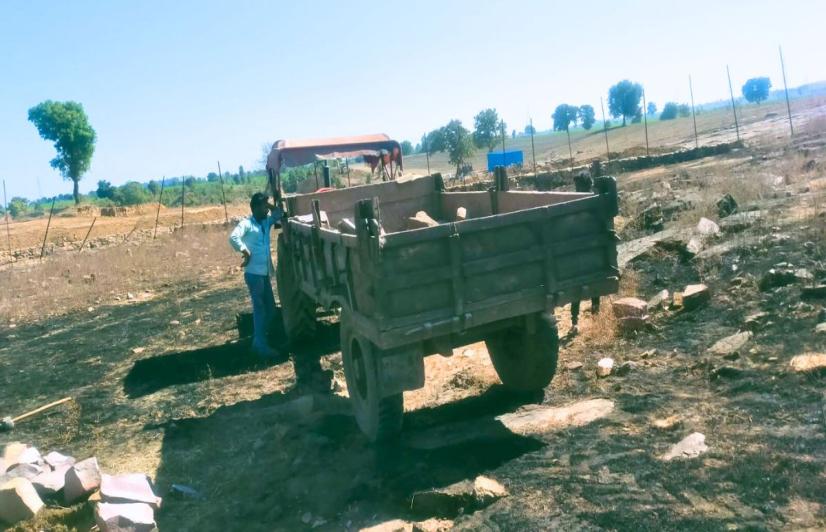By Sanavver Shafi
“A strange sound comes out whenever I breathe,” says Kulwant Bai (40) of Acharpura village, located about 20 km from Bhopal.
“I always have a sore throat. The local doctor could not help much. Therefore, I visited the Government Community Health Centre (CHC) in Bhopal’s Gandhinagar. The doctor told me I had throat and lung infection, and advised me to stay away from dusty environments, but I did not know how.“
Kulwant and her family of four have been living in Acharpura for 26 years, where stone, ballast and murram mining is commonplace. A powdery film — a mixture of dust and other fine particles — covers the houses. Dust clouds hang around constantly. The farmlands look grey and dull from a distance itself. Nothing much grows here and whatever does is not good for consumption.
Residents of many other areas of Bhopal — Neelbad-Ratibad, Balampur, Kolar Kajlikheda, Nipania Jat, Kurana, Chandpur, Nazirabad Gram Dhamantodi and Baroda — have similar stories to tell.
Stone mining involves the extraction of granite, limestone or marble from quarries or mines. Ballast, a type of gravel or crushed rock, is also extracted from some mines. On the other hand, the ground is excavated to extract murram, a mixture of soil and small stones.
The air that kills
Sushila Bai (30) of Mastipura, located 10 minutes from Acharpura, understands what Kulwant is going through. “I came here after my marriage in October 2020. After a few months, I was expecting my first child… and all of us — my husband, mother-in-law, brother-in-law and sister-in-law — were happy. But one day, I fainted and was taken to the doctor, who told me I have anaemia. Pollution was cited as the reason.”
“I used to wrap a cloth around the face, what else to do? The baby weighed less than normal at birth… and doctors said he had a lung condition as well. Anyway, he did not survive for more than a few days,” she cries bitterly.
Anaemia is prevalent in women in the area. “Exposure to particulate matter [PM2.5] for long periods can lead to oxidative stress, which impairs the circulation and absorption of iron in the body. Iron deficiency reduces the formation of haemoglobin in the body,” Dr Hansmukh Jain of Bhopal tells 101Reporters.
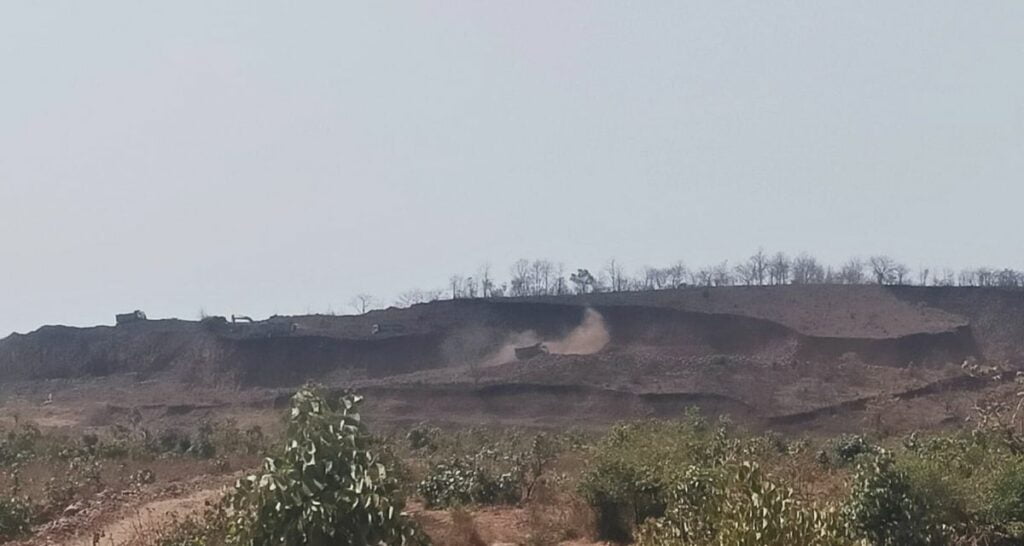
Long-term exposure to air pollution and fine particles (PM2.5 and PM10) increases the risk of anaemia, a 2022 study from the Indian Institute of Technology, Delhi, has found.
Other than pollution, the most obvious reason for anaemia is malnutrition. “Needless to say, if the mother is unhealthy, the child will also be. If we examine the National Family Health Survey (NFHS)-5, 53.5 per cent of women (15 to 49 years) in the Bhopal district are anaemic. About 68.5 per cent of children under the age of five are anaemic, while 18 per cent of the children aged under five are stunted and 19 per cent are underweight,” cites Ravi Pathak, who works for Hidayat, a social organisation dealing with malnutrition in Bhopal rural.
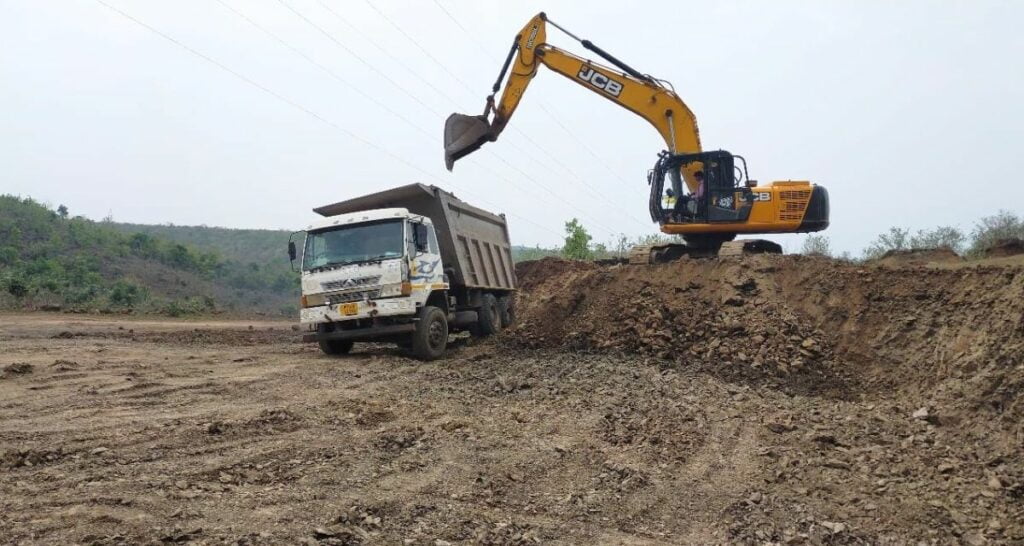
Meanwhile, a doctor at Gandhi Nagar CHC tells 101Reporters that four out of 10 people visiting the outpatient department suffer from lung and respiratory diseases. “Allergies and eye and skin infections are also going up. If the condition is serious, I refer the patient to Government Hamidia Hospital in Bhopal,” he says, on condition of anonymity.
The villagers are susceptible to incurable diseases such as silicosis, an interstitial lung disease caused by inhaling tiny silica particles found in rocks and soil. This causes permanent lung scarring over time. “However, they cannot afford to stop working in the mines because they do not receive pensions or other financial assistance,” Pathak says.
Rules on hold
Things could have been far better if the mines followed the guidelines related to air quality, says social worker and environment activist Rashid Noor Khan.
As per the guidelines issued by the Madhya Pradesh Pollution Control Board (MPPCB), stone crushers should be covered with a tin sheet to prevent the dust from escaping. Labourers should be given “telescopic suits,” for protection against dust and dirt. Additionally, water sprinklers to settle dust should be in place.
But none of the mines, and definitely not the illegal ones, in Acharpura, Neelbad, Ratibad, Mastipura and Kaliyasot follow the rules, alleges Khan. “The worst part is there is no way to check pollution levels in these places. I believe the Air Quality Index may be at dangerous levels here,” he adds.
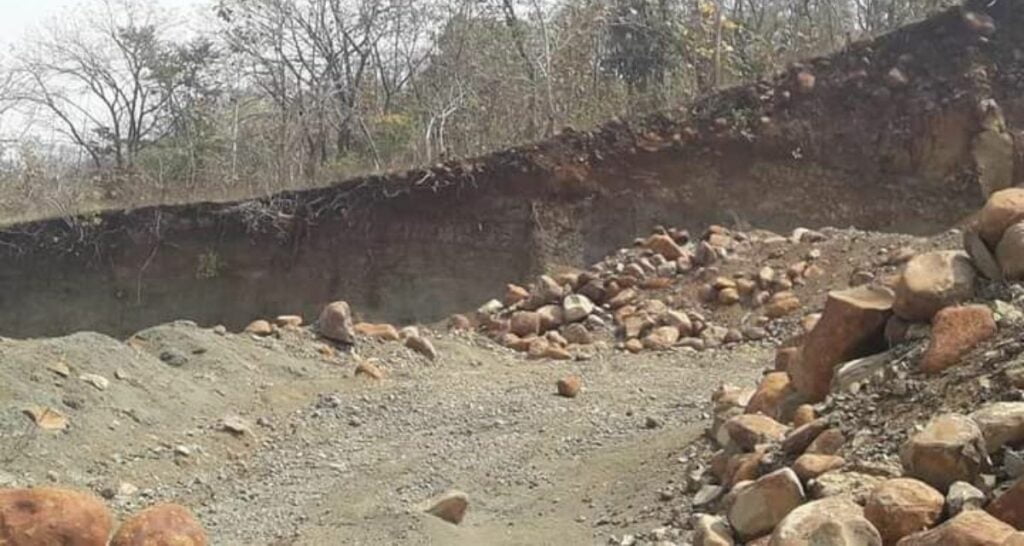
MPPCB Regional Officer Brajesh Sharma tells 101Reporters that equipment to measure air quality is not located near the mining spots. “They are installed in the city, so we cannot measure the pollution from mines. However, we take speedy action whenever we get complaints. Acting on one such complaint, our team recently investigated and submitted a report regarding an illegal mine in Mastipura. Subsequently, the mine was shut,” he says.
Khan, however, alleges that he has complained about air pollution in several places located near Bhopal to the PCB many times in the last three years, yet no action has followed. “And even if they do, it is often too late. In Mastipura, that was the case.“
He also says that despite the orders from four district Collectors in the past, the mine demarcation work to record and limit the area where operations are allowed has not been completed.
Acting on complaints, Nikunj Srivastava, the then district Collector, had first issued directions to demarcate all mines in 2013. In 2015, Nishant Warwade launched an investigation and gave instructions to make security arrangements to prevent illegal activities in mines. This stopped as soon as he was transferred. Dr Sudam Khade in 2018 and Avinash Lavania in 2023 gave instructions to fence the mines, but things remain the same. Lavania is no longer posted in Bhopal.
“Demarcation would prevent illegal mining in areas where no permission has been given for excavation, while fencing will prevent accidents… There is a flurry of activity only when an unfortunate child drowns in an open mine pit. Otherwise, the administration hardly cares,” rues Khan.
Mining beyond the legally allotted areas is quite common in Acharpura, Mastipura, Binapur, Khajuri and Ratatal. “Before issuing permission, the revenue officer of the mineral department and an official of the forest department will demarcate the area, but the contractors give it a pass. Action taken on our complaints is nominal,” says Jitendra Meena, a social worker from Mastipura.
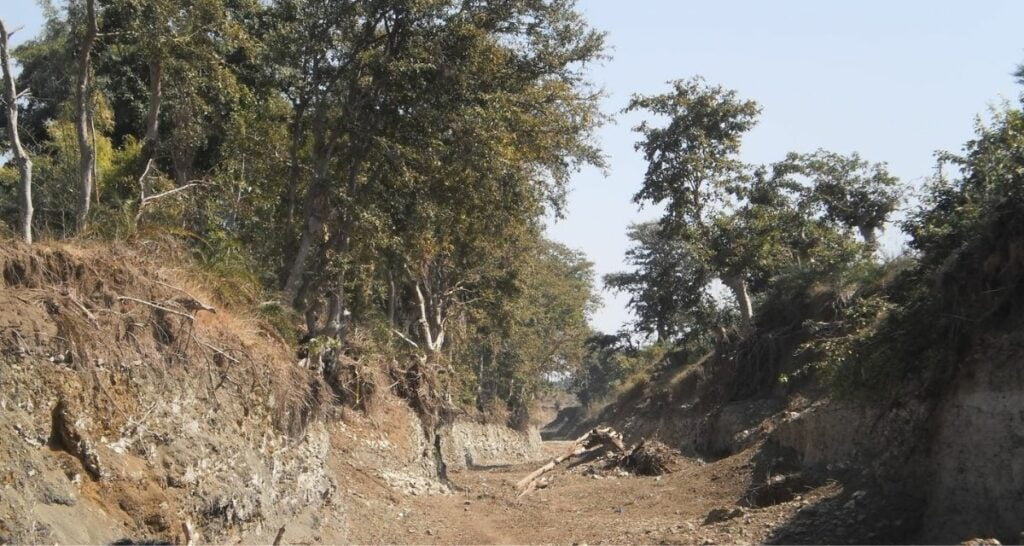
Refuting Meena’s allegations, Bhopal district Mineral Officer SS Baghel tells 101Reporters that the mineral department is quick to take action over complaints. “Recently, we got a complaint regarding a mine allotted to one Punit Jain in Mastipura. Our investigations revealed that Jain had mined from the area where he had no permission to operate. A case was registered in the Collector’s court and a fine of Rs 5 lakh was imposed.“
“In 2022-2023, the department had filed 15 cases of illegal mining in the Bhopal district and seized 17,379 cubic metres of minerals in all. In three cases, 18 cubic metres of sand and two tractors were seized. Also, 17,186 cubic meters of murram in seven cases and 134 cubic meters of boulder in five cases were impounded. Similarly, 41 cubic meters of soil and one dumper were seized in two cases. As many as 67 cases of illegal storage and 14 cases of illegal transportation have also been registered,” Baghel claims.
In the Bhopal division, the mineral department has allotted 140 stone quarries, 27 murram mines and one gravel mine each in Manpur-Gopalpur mines through e-tender. The department has earned a revenue of Rs 83.74 crore in the last five years, while Rs 17.13 crore was the revenue in 2021-22.
Sanavver Shafi is a Bhopal-based freelance journalist and a member of 101Reporters, a pan-India network of grassroots reporters
About the author(s)
101Reporters is a pan-India network of grassroots reporters that brings out unheard stories from the hinterland.
